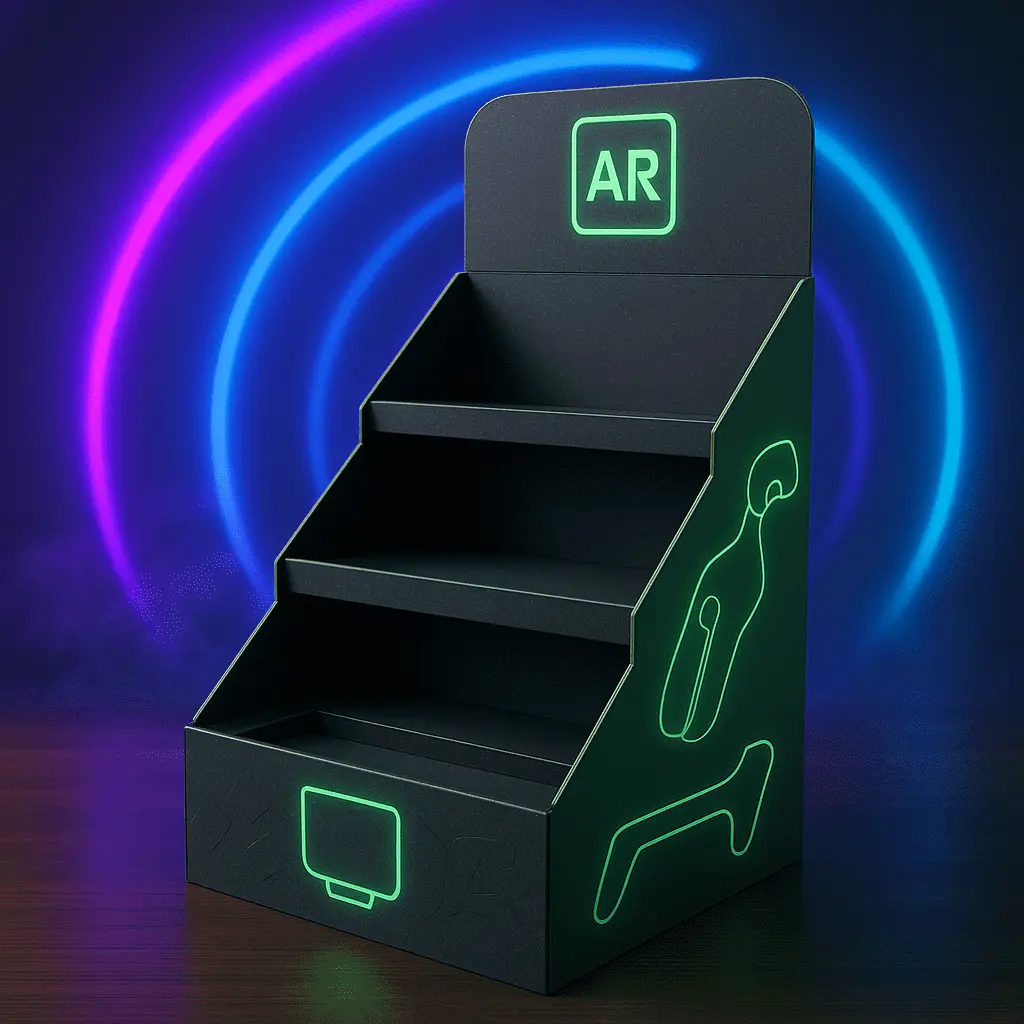The Power of PDQ Displays in Retail Environments
Enhancing Product Visibility and Accessibility
PDQ displays serve as silent salespeople, strategically positioning products to catch consumers' attention. By elevating items from crowded shelves to prominent counter spaces, these displays significantly improve product visibility. The carefully designed structures allow for easy access, encouraging customers to interact with the products. This hands-on approach often leads to increased engagement and higher conversion rates.
Moreover, PDQ displays excel at creating focal points within stores. Their eye-catching designs and vibrant graphics naturally draw customers' gazes, guiding them towards featured products. This visual magnetism is particularly effective for new product launches or promotional campaigns, where capturing immediate interest is crucial.
Driving Impulse Purchases and Cross-Selling Opportunities
One of the most potent advantages of PDQ counter displays lies in their ability to stimulate impulse purchases. Positioned near checkout areas or high-traffic zones, these displays tap into customers' spontaneous buying behavior. The convenience and accessibility they offer can turn a casual browser into a buyer in moments.
Furthermore, PDQ displays excel at facilitating cross-selling strategies. By grouping complementary items together or showcasing product bundles, retailers can increase average transaction values. This strategic merchandising approach not only boosts sales but also enhances customer satisfaction by presenting relevant product combinations.
Adapting to Seasonal and Promotional Needs
The flexibility of PDQ displays makes them ideal for seasonal merchandising and promotional events. Retailers can swiftly update their store layouts to reflect changing seasons, holidays, or special offers. This adaptability ensures that the retail environment remains fresh and engaging, encouraging repeat visits from customers.
Custom-designed PDQ displays can be tailored to align with specific promotional themes or brand identities. This level of customization allows businesses to create cohesive marketing campaigns that resonate with their target audience, reinforcing brand messaging and fostering customer loyalty.
Designing Effective PDQ Counter Displays
Structural Considerations for Maximum Impact
The structural design of PDQ displays plays a pivotal role in their effectiveness. Durability is paramount, as these displays must withstand frequent customer interactions and potential restocking. Materials such as corrugated cardboard, acrylic, or metal are often employed, each offering unique benefits in terms of strength, weight, and aesthetic appeal.
Size and configuration are equally crucial factors. PDQ displays must be proportionate to the products they showcase and the available counter space. Modular designs that can be easily assembled or reconfigured offer added versatility, allowing retailers to adapt to changing needs or store layouts.
Visual Elements That Capture Attention
The visual design of PDQ displays is instrumental in attracting customers and conveying brand messages. Color psychology plays a significant role, with different hues evoking specific emotions or associations. Bold, contrasting colors can create visual pop, while harmonious palettes may align more closely with sophisticated brand identities.
Graphics and typography are powerful tools for communicating product information and promotional messages. Clear, legible text ensures that key details are easily absorbed, while compelling imagery can create emotional connections with potential buyers. The integration of digital elements, such as QR codes or interactive screens, can further enhance engagement and provide additional product information.
Ergonomics and User Experience
An often-overlooked aspect of PDQ display design is ergonomics. The layout should facilitate easy product selection and removal, minimizing customer frustration. Consider factors such as reach distances, product weight, and the natural flow of customer movement around the display.
User experience extends beyond physical interactions. The display should tell a cohesive story about the product, guiding customers through features, benefits, and potential uses. This narrative approach can significantly influence purchasing decisions and enhance overall customer satisfaction.
Maximizing ROI with Strategic PDQ Display Implementation
Data-Driven Placement and Product Selection
To maximize the return on investment for PDQ displays, retailers must leverage data-driven strategies for placement and product selection. Analyzing foot traffic patterns, sales data, and customer behavior can inform optimal positioning within the store. High-visibility areas near entrances, checkout counters, or alongside complementary product sections often yield the best results.
Selecting the right products for PDQ counter display is equally critical. Items with high margins, strong brand recognition, or those that benefit from impulse purchases are typically well-suited for these displays. Regularly rotating products based on performance metrics ensures that the display space is always used effectively.
Integration with Omnichannel Marketing Strategies
PDQ displays should not exist in isolation but rather as part of a cohesive omnichannel marketing strategy. Coordinating in-store displays with online promotions, social media campaigns, and mobile marketing efforts creates a seamless customer experience across all touchpoints. This integrated approach reinforces brand messaging and can drive traffic between digital and physical retail environments.
QR codes or NFC tags on PDQ displays can bridge the gap between physical and digital realms, offering customers access to additional product information, reviews, or exclusive online offers. This tech-savvy approach not only enhances the shopping experience but also provides valuable data on customer engagement and preferences.
Measuring and Optimizing Performance
Continuous monitoring and optimization are essential for maintaining the effectiveness of PDQ displays. Implementing tracking systems to measure sales lift, conversion rates, and customer interactions provides valuable insights for refinement. A/B testing different display designs, product arrangements, or promotional messaging can help identify the most impactful strategies.
Regular feedback from sales staff and customers can offer qualitative insights that complement quantitative data. This holistic approach to performance evaluation ensures that PDQ displays remain dynamic and responsive to changing market conditions and consumer preferences.
Conclusion
PDQ counter displays stand as a cornerstone of effective retail merchandising, offering unparalleled opportunities for product showcase and sales enhancement. By thoughtfully designing and strategically implementing these displays, businesses can create immersive shopping experiences that captivate customers and drive conversions. As the retail landscape continues to evolve, the adaptability and impact of PDQ displays make them an indispensable tool for achieving merchandising excellence. Embracing innovative design approaches and data-driven strategies will ensure that PDQ displays remain at the forefront of retail success, fostering brand loyalty and boosting bottom lines in an increasingly competitive marketplace.
Contact Us
Ready to elevate your retail merchandising strategy with custom PDQ counter displays? We provide fully customizable display options - size, structure, printing, and finishing - all tailored to your brand and product. Contact Guangzhou Huadu Fetching Color Printing and Packaging Co., Ltd. at support@fetchingprinting.com to explore tailored solutions that will set your products apart and drive sales success.





